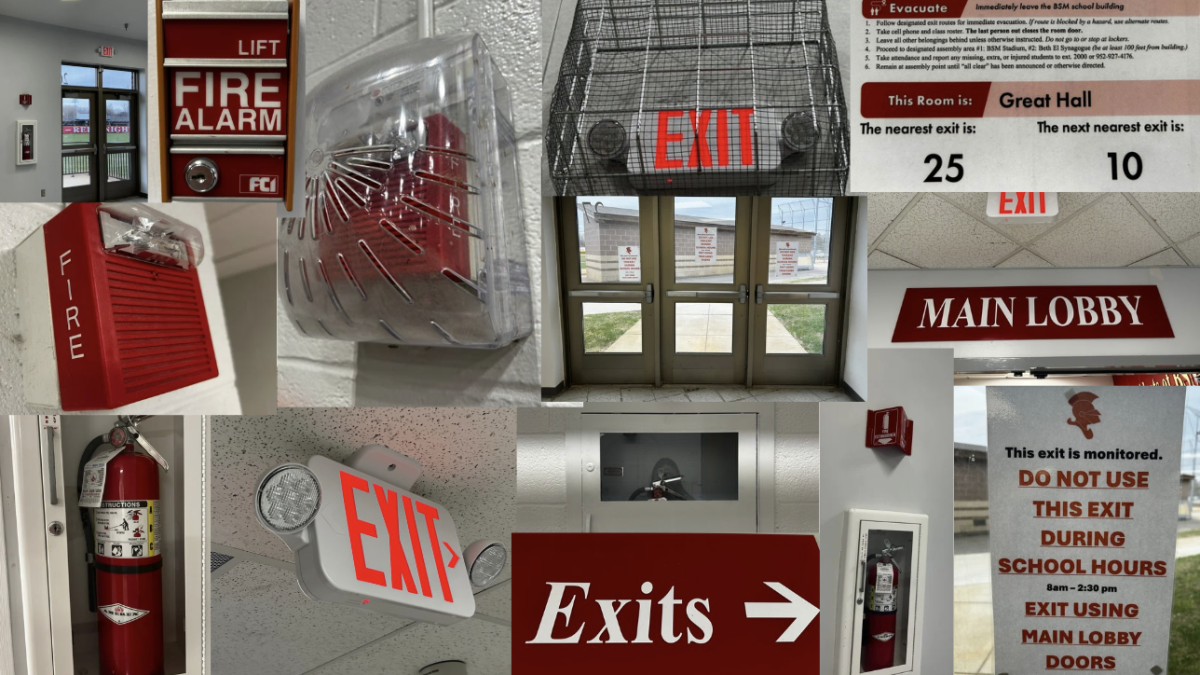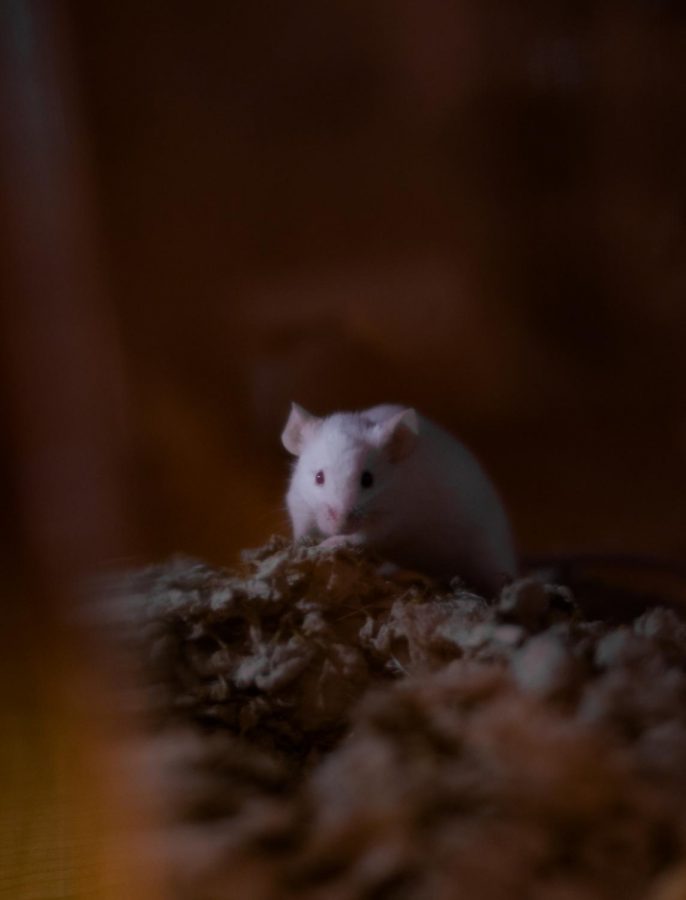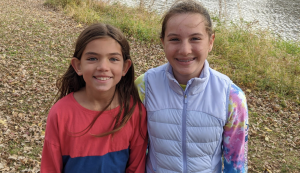Bio Med III welcomed 14 new students in the form of…. mice.
The mice are all named after cheese or mouse related things.
February 22, 2019
BSM is full of students, faculty, and now, mice. Seniors Abby O’Neil and Megan Daubenberger are currently experimenting on live mice for their BioMed III project.
BioMed III is a continuation of BioMed I and II and focuses on independent research and an experiment. In addition, many of the students choose to present their projects at the Regional Science Fair on March 1. “So the BioMed III class is an independent research class that runs the entire year. The way that it’s supposed to work is that the students arrive in the fall with questions and even a preliminary research plan. They persevere throughout the year asking questions, refining questions, coming up with an investigation that they can present,” science teacher Mr. Mark Peterson said.
O’Neil and Daubenberger chose to focus their investigation on vaping and the short term and long term health consequences. Vaping has become increasingly popular, especially in teens, and many of the side effects are still unknown. O’Neil and Daubenberger decided to test the effects of diluted vape juice on mice. “We can’t use humans, so they’re a cheap alternative and they’re cute,” O’Neil said.
In order to use the mice, Peterson had to talk to principal Dr. Susan Skinner and O’Neil and Daubenberger had to talk to assistant principal Ms. Cami Dahlstrom. “There are guidelines, there’s international organization for care and maintenance of laboratory animals so we’ve read through those guidelines. There’s technically not supposed to be any harm done to the animals; we’re not supposed to kill them––they’re a vertebrate animal, so we were very conscious and cautious of that,” Peterson said.
In addition to getting permission from the school, O’Neil and Daubenberger met with a veterinarian from the Wayzata Animal Hospital. “For the science fair we had to get a vet’s approval to sign off on all of the forms. It was a long process because we had to find a vet, get a vet to sign off, get the mice, and get the materials. It took a while––most for the approval process though,” O’Neil said.
Even though O’Neil and Daubenberger shopped at pet stores around the west metro, they ended up purchasing their mice from Twin Cities Reptiles. “Basically [we] just went there and we had pre-ordered them so we picked them up and had all of the mice in a big container and then they plucked out the boys and the girls and put them in their cages,” O’Neil said.
In addition to performing and observing the experiment, O’Neil and Daubenberger have to take care of the mice everyday––even on the weekends. On the cold days in January, students weren’t allowed to come to school so Mr. Peterson had to come in and care for them. “I was alone––me and the mice just hanging out. I came in everyday and fed them and changed their water and their bedding. You gotta take care of the animals, that’s part of the animal research guidelines. They were happy to be fed and watered,” Peterson said.
O’Neil and Daubenberger have 14 mice in total in order to have an accurate control and experimental group. They also have named all of the mice and tried to name them after cheese or mouse related things. After they have finished with their experiment, the two are going to give the mice away. “We called the Humane Society and they said that they would take them, and then we have some friends that want a pet mouse afterwards, so we might be giving those to them,” O’Neil said.
In addition to feeding and changing the water and bedding, O’Neil and Daubenberger have to make sure that none of the mice escape. Working with the mice is an experience and Peterson won’t miss having them around. “I think they’re finding a reward and satisfaction in what they’re doing but they’re recognizing, especially with living things, it’s not always convenient, it’s not always not smelly. I think it’s been a good experience…I will not miss them––some of them I do not trust and Julius Cheeser is sneaky,” Peterson said.
Even with all of the work, smell, and making sure the mice don’t escape, O’Neil doesn’t regret her choice for a BioMed III experiment.“I think it’s really fun because it’s like having a class pet, times 14. I just think it’s fun and it makes class more exciting,” O’Neil said.




































![Teacher Lore: Mr. Hillman [Podcast]](https://bsmknighterrant.org/wp-content/uploads/2025/03/teacherlorelogo-1200x685.png)













